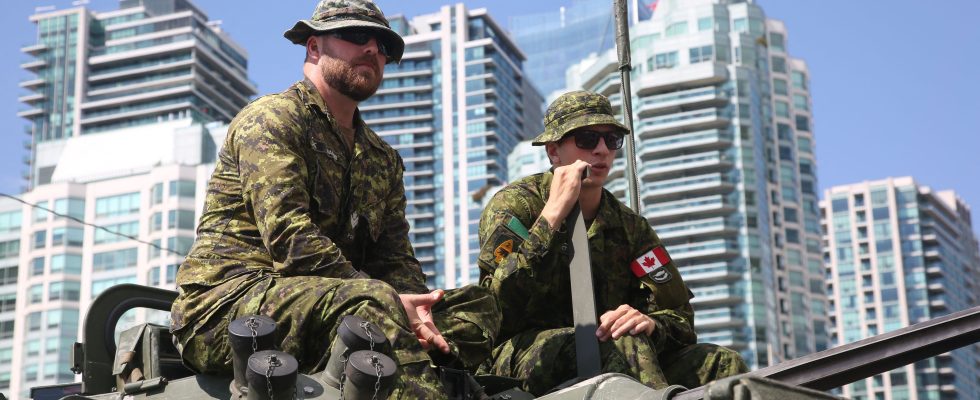Following the Russian invasion of Ukraine on February 24, 2022, Canada committed to helping kyiv to the tune of $2.4 billion (2.2 billion euros) in the form of military equipment. Two years later, the promise is far from having been honored. According to Canadian government data, reported by the Quebec newspaper The duty“1.4 billion has still not materialized on the ground, […] or 58% of the total amount of donations announced.
This amount includes in particular the national advanced surface-to-air missile system (NASAMS) and associated munitions, worth $406 million, which Ottawa aimed to purchase from the United States in January 2023 for delivery to Ukraine subsequently. At a time when kyiv is facing a significant shortage of equipment and an increase in Russian air attacks, these delivery failures weigh heavily on the Ukrainian armed forces.
In addition to the impact on the battlefield, the gap between Ottawa’s displayed and quantified support for kyiv and reality deteriorates “Canada’s image among [ses] allies”, regrets the army specialist Christian Leuprecht, professor at the Royal Military College of Canada, in the columns of Duty. Allies who, in fact, perceive the country as “increasingly indifferent to this war and above all unreliable”.
1.38% of Canadian GDP allocated to defense
But this situation is linked to a more global problem concerning the Canadian army. While Article 5 of the North Atlantic Treaty Organization (NATO) stipulates that signatory states are required to assist their allies in the event of a major crisis, “at present, only 58% of the Forces Canadian armies […] would be able to intervene […] – and almost half of military equipment is considered ‘unavailable and unusable'”, it is specified in an internal report from the Ministry of Defense, mentioned by the Canadian national public broadcaster, the CBC.
Concerning the Royal Canadian Air Force, according to this report, 55% of fighters, maritime aviation, search and rescue, tactical aviation, training devices and means of transport are judged to be out of service. ‘use. As for the navy, 54% of frigates, submarines, coastal defense ships, Arctic and offshore patrol boats are also unusable.
In 2023, according to NATO data, 1.38% of Canadian GDP was allocated to defense. The country is thus ranked 25th out of 30 by the international organization. An observation which seems – once again – to contradict the promise made by Ottawa to its NATO allies on July 11. On that date, Canada affirmed its desire to join the “sustainable commitment” to devote at least 2% of GDP to defense. However, on February 24, the Canadian government ordered a reduction equivalent to 1.1 billion euros in the defense budget, as reported Defense News.
“Decades of underfunding”
“If Ottawa had deliberately tried to destroy Canada’s credibility as quickly as possible, it could not have done better,” protests the editorial of the Global and Mail, pointing out the responsibility of Justin Trudeau’s liberal government. He continued: “The proportion of the federal budget allocated to the Department of Defense increased from 6.6% in fiscal year 2015 to approximately 5.3% in the current year.”
Consequence: lack of ammunition, the country would be “unable to fight in a few days” in the event of a conflict, Defense Minister Bill Blair admitted on March 7 before the Defense Committee of the House of Commons .
An “extremely disastrous” situation, as the television channel describes it CTV News, which stems from “decades of underfunding, government after government.” “Recruitment gaps persist. And strategic challenges are growing, from Russia’s war of conquest to China’s growing assertiveness,” says the Globe and Mail. But in their eyes, the Liberals have only one battle to fight: the 2025 federal elections.”
